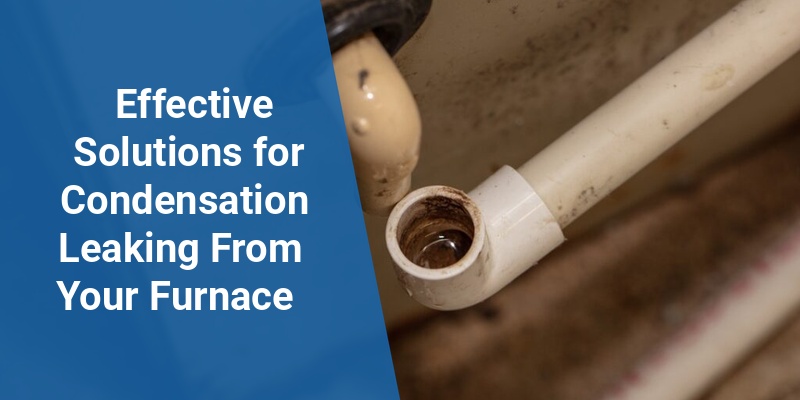Condensation leaking from a furnace is a common issue in homes, particularly with high-efficiency models. This problem can indicate underlying mechanical malfunctions or improper installation, leading to water damage, mold growth, and system inefficiencies. Addressing condensation leaks promptly ensures optimal furnace operation and protects home structures. This article explores causes, diagnosis, and fixes for condensation leaks in furnaces, ideal for homeowners seeking to maintain safe and efficient heating systems.
| Aspect | Key Information |
|---|---|
| Common Causes | Clogged drain lines, cracked heat exchangers, improper venting |
| Signs of Leaking | Water pooling near furnace base, rust, unusual noises |
| Prevention Tips | Regular maintenance, draining condensation pans, ensuring proper ventilation |
| Repair Options | Drain cleaning, component replacement, professional furnace inspection |
| Health Risks | Mold growth, air quality issues due to moisture |
What Causes Condensation Leaks in Furnaces?
Furnaces, especially high-efficiency condensing units, produce water as a byproduct during heat extraction. When this condensation is not properly drained or managed, leaks occur. Common causes include clogged or damaged drain lines, cracked heat exchangers, improper venting, and blocked condensate pumps. Additionally, accumulated debris or rust in the furnace’s drainage system can restrict water flow and lead to leaks.
Low outdoor temperatures causing excessive condensation buildup can also overwhelm drainage capabilities.
Identifying Signs of Condensation Leaks From Furnaces
Recognizing condensation leaks early is crucial to prevent extensive damage. Homeowners may notice water pooling around the base of the furnace, damp spots on walls or floors adjacent to the unit, or rust forming on furnace components. Unusual sounds such as gurgling or dripping might indicate blocked condensate drainage. Furthermore, a musty odor can suggest mold growth triggered by moisture accumulation.
Risks Associated With Furnace Condensation Leaks
Condensation leaks in furnaces present several risks, including structural damage from water exposure, corrosion of furnace parts, and reduced unit efficiency. Persistent moisture can foster mold and mildew growth, which negatively impact indoor air quality and may cause allergies or respiratory issues. Ignoring condensation leaks can lead to costly repairs and health hazards.
How To Prevent Condensation Leaks From Your Furnace
Preventative maintenance is key to avoiding condensation leaking problems. Schedule annual professional furnace inspections and cleanings to ensure drain lines and pans are unclogged and functioning properly. Installing a condensate pump in areas without natural drainage can prevent water buildup. Proper furnace installation and venting also minimize the risk of condensation accumulation.
For homeowners in cold climates, insulating condensate drain lines can reduce freezing and blockage issues.
Call 888-906-9139 for Free Local HVAC Quotes – No Obligation, Just Savings!
Step-By-Step Solutions To Fix Condensation Leaking Issues
Effective repair involves inspection and targeted fixes:
- Inspect and clear clogged drain lines: Use a wet/dry vacuum or pipe cleaner to remove debris blocking condensate drains.
- Check and replace damaged components: Cracked heat exchangers or rusted pans should be repaired or swapped to stop leaks.
- Ensure proper furnace venting: Confirm that exhaust pipes and air intakes are correctly installed and unobstructed.
- Install or maintain condensate pumps: Pump malfunction can cause water overflow; regular maintenance or replacement may be necessary.
Always hire a certified HVAC technician for complex repairs to guarantee safety and compliance with local codes.
Maintaining Your Furnace To Avoid Future Condensation Leaks
Ongoing maintenance helps sustain furnace health and prevent leaks. Homeowners should:
- Perform regular visual inspections near the furnace for any signs of moisture.
- Clean or replace furnace filters monthly to enhance airflow and efficiency.
- Flush condensate drains annually to prevent buildup.
- Seal and insulate ducts and pipes to maintain proper temperature and reduce condensation.
Keeping detailed maintenance records aids service professionals in diagnosing issues quickly.
When To Call A Professional HVAC Technician
If the source of condensation leaks is unclear or involves internal furnace components, professional intervention is required. Complex tasks such as heat exchanger replacement or venting system overhaul should never be attempted by homeowners. Certified HVAC technicians have specialized tools and expertise to diagnose, repair, and test furnaces thoroughly, ensuring safety and efficiency.
Regular professional tune-ups also extend the lifespan of a furnace and improve overall heating performance.
